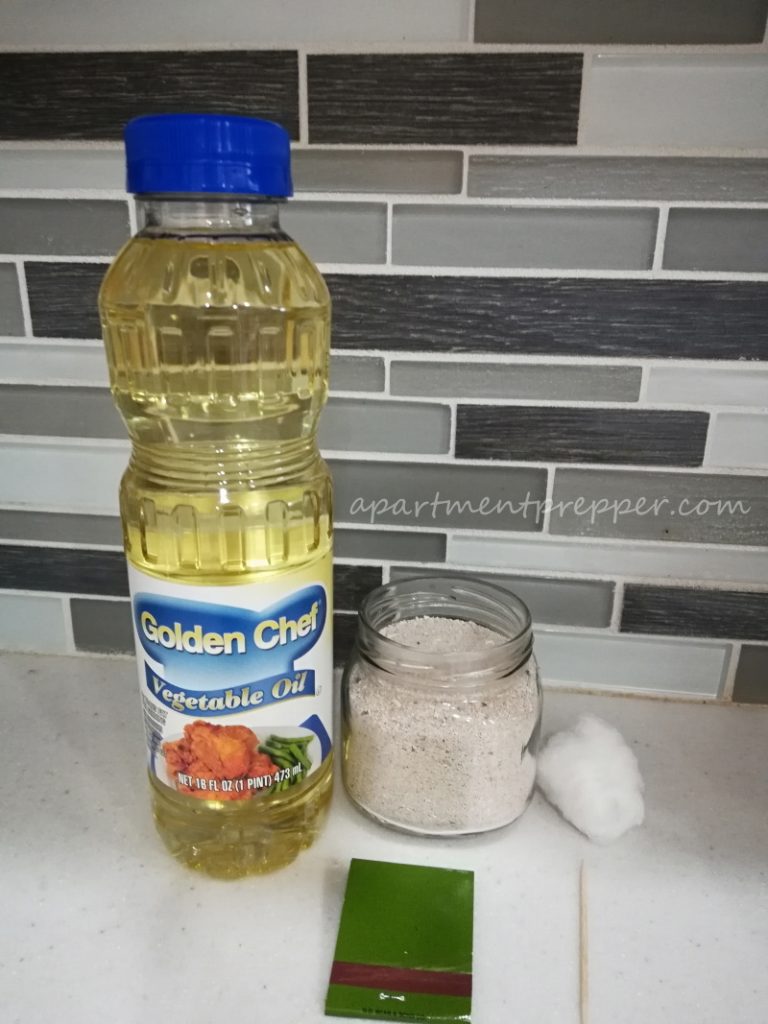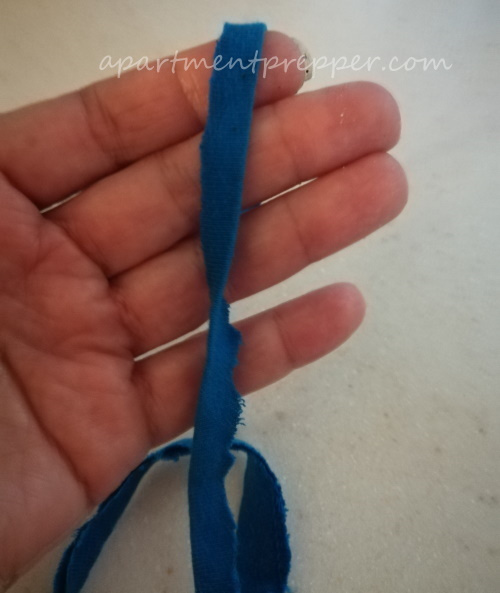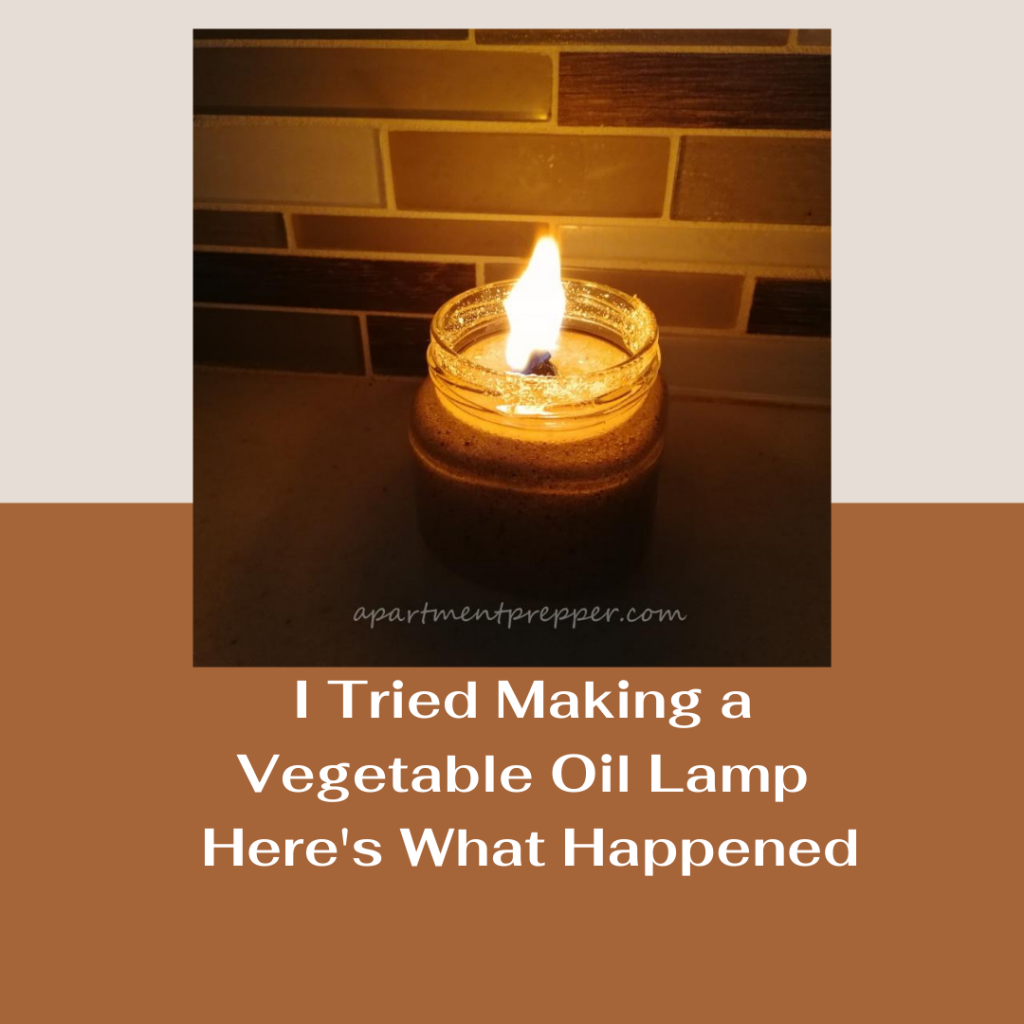This post is by Bernie Carr, apartmentprepper.com
Today I’d like to share a fun DIY project. I made a vegetable oil lamp from items I had around the house.
I got the instructions from Ron Brown’s Olive Oil Lamps (The Non-Electric Lighting Series) available on Kindle.
Before we begin, let’s get the warnings out of the way: If you make this homemade emergency lamp, keep away from curtains and other flammable materials and anyone who can knock it over, pets and children.
Materials

Small jar
I used a small jar that used to contain marinated artichokes. You can also use a baby food jar which was recommended in the book.
Dry sand
I had sand that I used for crafting. You can also use common table salt. You have to make sure the sand or salt is completely free of moisture or the flame will sputter.
Wick
For the wick, had a cotton ball (must be 100% cotton- more details on this below) and a toothpick.
You’ll also need matches or a lighter to light the lamp.
Directions
1. Wrap cotton around the toothpick.
2. Add sand to the jar until about 3/4 full, with a little room at the top.

3. Pour vegetable oil into the jar of sand. Make sure the oil reaches all the way to bottom. Stir the sand and make sure the oil saturates the sand. Add a bit more oil but do not fill to the brim.
4. Stick the cotton wrapped toothpick in the sand.
5. Once the wick has soaked up some oil, go ahead and light it.
Result
When I tried to light the cotton covered wick, it did not hold a flame. I even added a drop of alcohol to help the flame to catch. Nothing.

Then I realized the cotton may not be 100% but instead might be synthetic.
I emailed Ron Brown, the author, and he confirmed synthetic cotton will not light.

I cut a piece of an old 100% cotton t-shirt material into a strip and wound it around a toothpick. I replaced the original wick with the t-shirt wrapped toothpick. Once it got saturated, I lit the new wick.
It worked!

This time the cotton t-shirt wrapped wick held the flame and lit up nicely. The lamp is very pretty and looks decorative. Best of all, it’s made with materials you can easily find around the house.
***********************************************************************
We are an affiliate of Amazon.com, which means we received a small commission if you click through one of our Amazon links when you shop, at totally no cost to you. This helps keep the lights on at the blog. Thanks!
About the author:
Bernie Carr is the founder of Apartment Prepper. She has written several books including the best-selling Prepper’s Pocket Guide, Jake and Miller’s Big Adventure, The Penny-Pinching Prepper and How to Prepare for Most Emergencies on a $50 a Month Budget. Her work appears in sites such as the Allstate Blog and Clark.com, as well as print magazines such as Backwoods Survival Guide and Prepper Survival Guide. She has been featured in national publications such as Fox Business and Popular Mechanics. Learn more about Bernie here.



Regarding wicks, natural fibers such as cotton lift the oil to the flame by capillary action. Synthetic fibers (polyester, rayon, nylon, etc.) MELT in the heat of the flame. Thus endeth capillary action. Goodbye flame. Hello darkness.